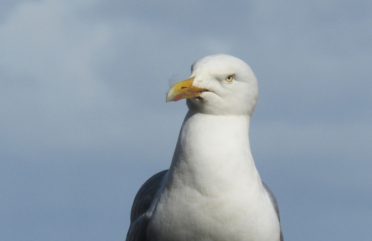

Sea birds & others
Scroll to view or skip to the groups of birds listed here:
moorhens and coots
swans, geese and ducks
beach visitors
Herring Gull
larus argentatus
These are the birds we generally think of as 'seagulls'. While we tend to think of them as very common, their numbers are actually in decline although perhaps they have been pushed into coming into contact with humans more often as fish populations have declined and urban rubbish has increased. Herring gulls are remarkably long-lived, some having lived to 49 years old.
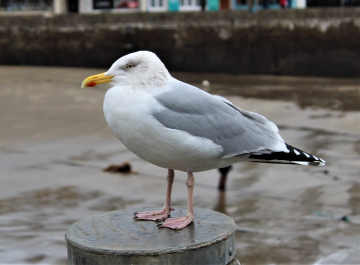
A juvenile herring gull:
Yellow-legged Gull
larus michahellis
If this were a spot-the-difference competition with the Herring Gull, there are two easy picks - the first is the yellow legs instead of the Herring Gull's pink legs and the second is the thicker red eyeliner on the Yellow-legged gull. Their grey feathers are also a shade darker. The two species are very similar, often identical, in size.
A young yellow-legged gull:
Lesser Black-Backed Gull
larus fuscus
These are slightly smaller than the herring gull and a slate grey rather than light grey with yellow legs. It is common all around the English and Welsh coasts but often mistaken for a herring gull.

Great Black-backed Gull
larus marinus
This is the darkest of these four large gulls, and the largest.

Next to the Herring gull, the Black-backed gull is much darker, and also much bigger (see photo below).
Black-headed gull
Chroicocephalus ridibundus
Black-headed gulls do indeed have black heads, but not all the time, They are, in fact, just as likely not to have black heads when you see them. Here's the thing - it only has a black head in the summer, losing it in its winter plumage which leaves it looking not unlike a small herring gull (with red legs). The juvenile black-headed gull (below right) also is without a black head.

Winter plumage above; summer plumage below.
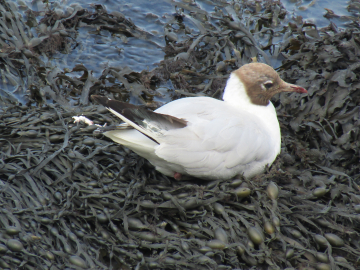
A juvenile black-headed gull:
A large flock of black-headed gulls (winter plumage) on the beach.

Sandwich Tern
sterna sandvicensis
Distinguishable by its messy black cap and largely black beak, the sandwich tern can be seen all around the UK coast although is resident in only specific patches. It is named, not after any cheese and pickle creation, but after Sandwich in Kent where it was seen. This tern was spotted in North Devon simply sitting calmy for a lenthy period of time. As they are not resident here, perhaps it was resting as it passed through.

Gannet
Morus bassanus
Gannets are large birds with a wing span approaching 2 metres but what is really striking about these birds is their dive. Flying at a height abot the waterwhen they spot a fish below, they got into a steep, fast dive, reaching speeds in the region of 100 km to get to their prey. Watching them, it is often the splash from their dives that is visible before the birds themselves.
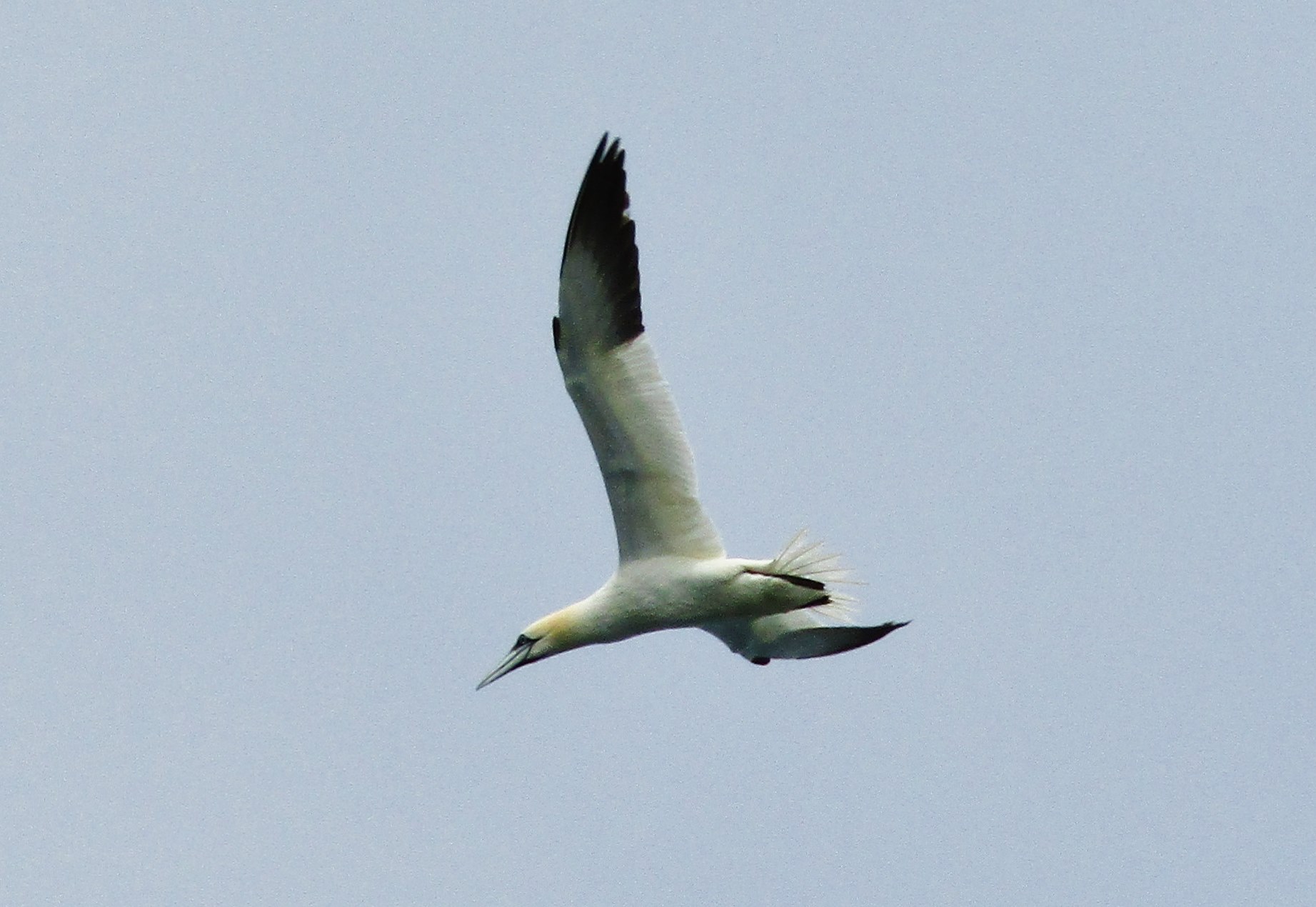
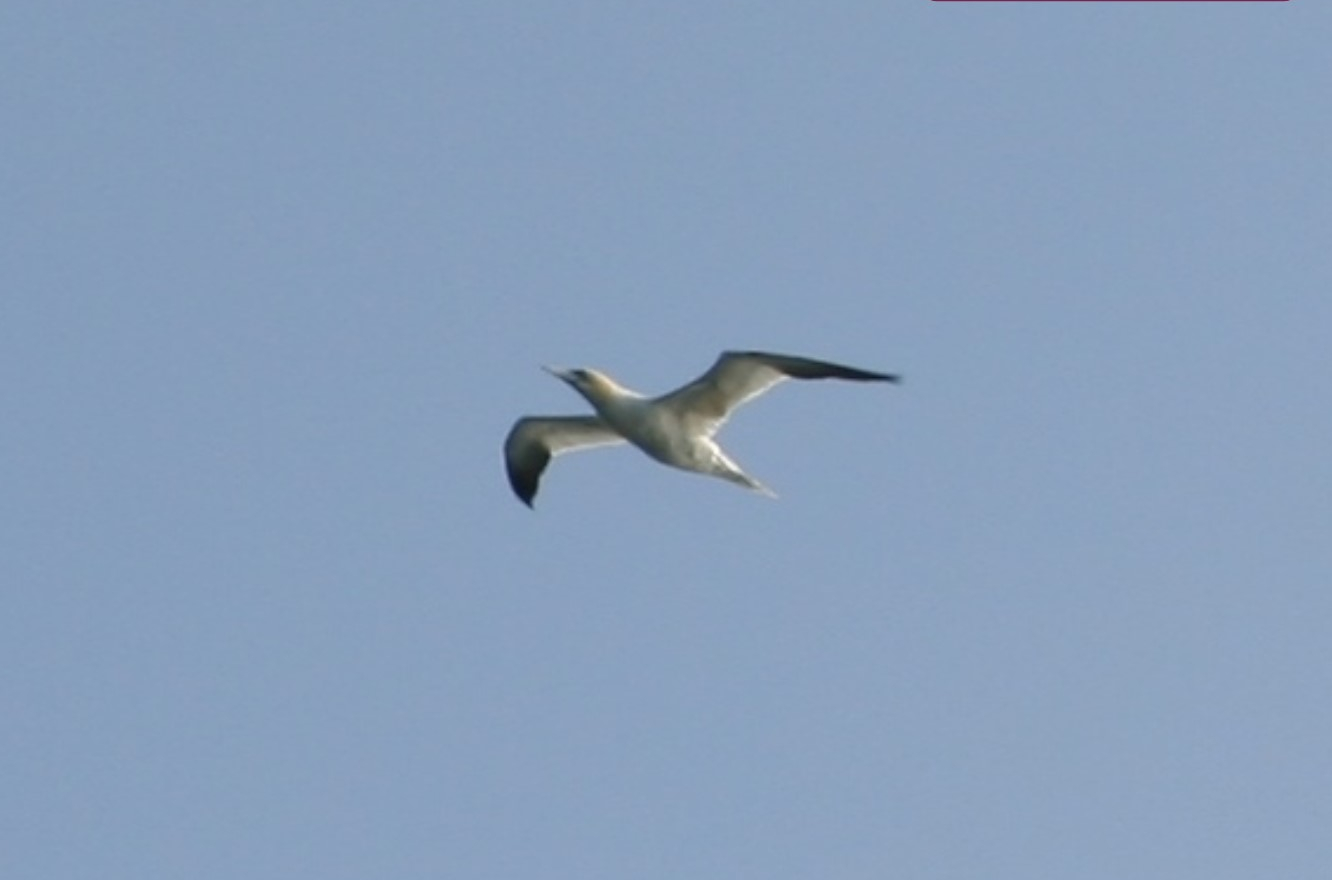
Below: a young gannet
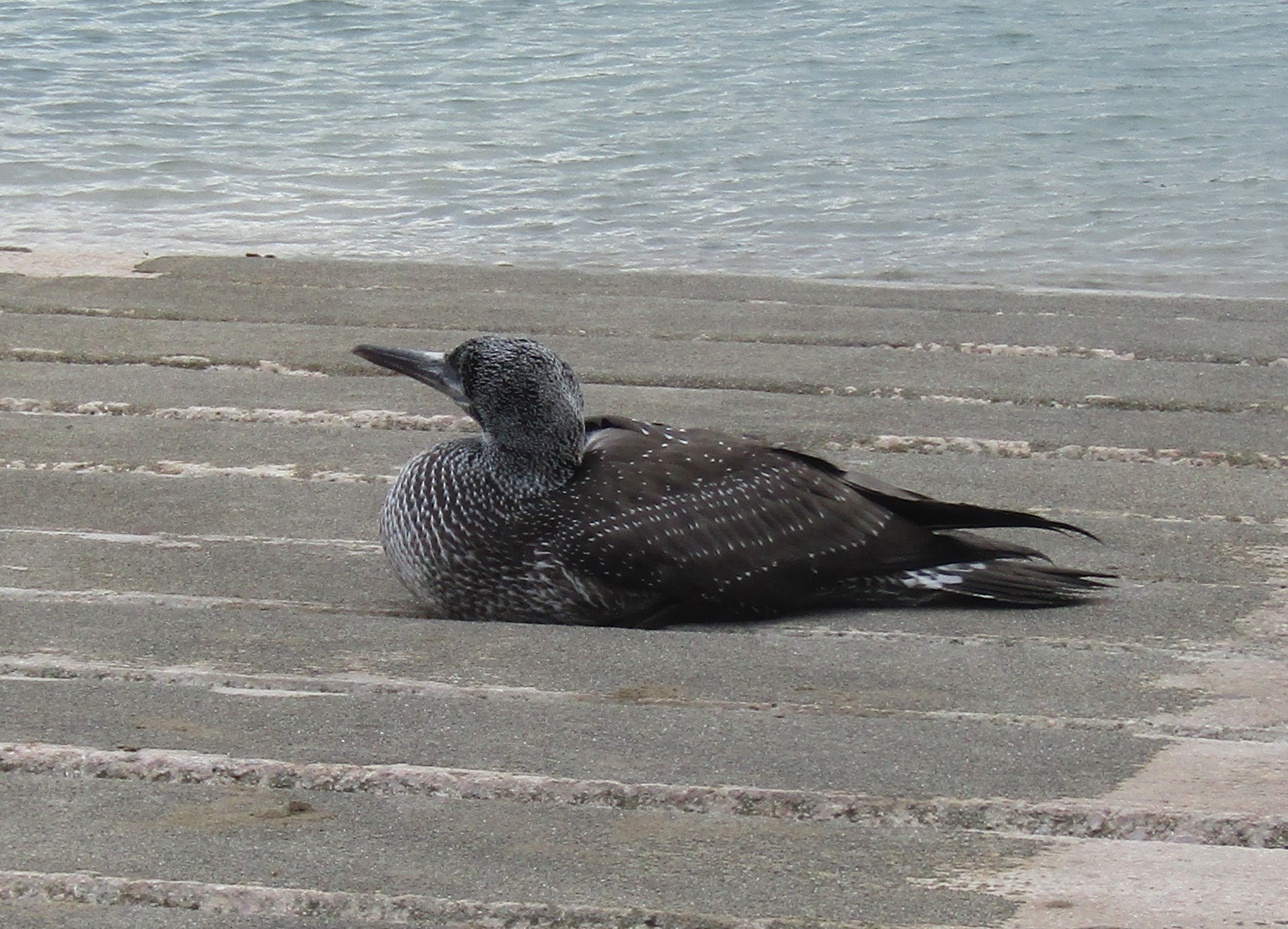
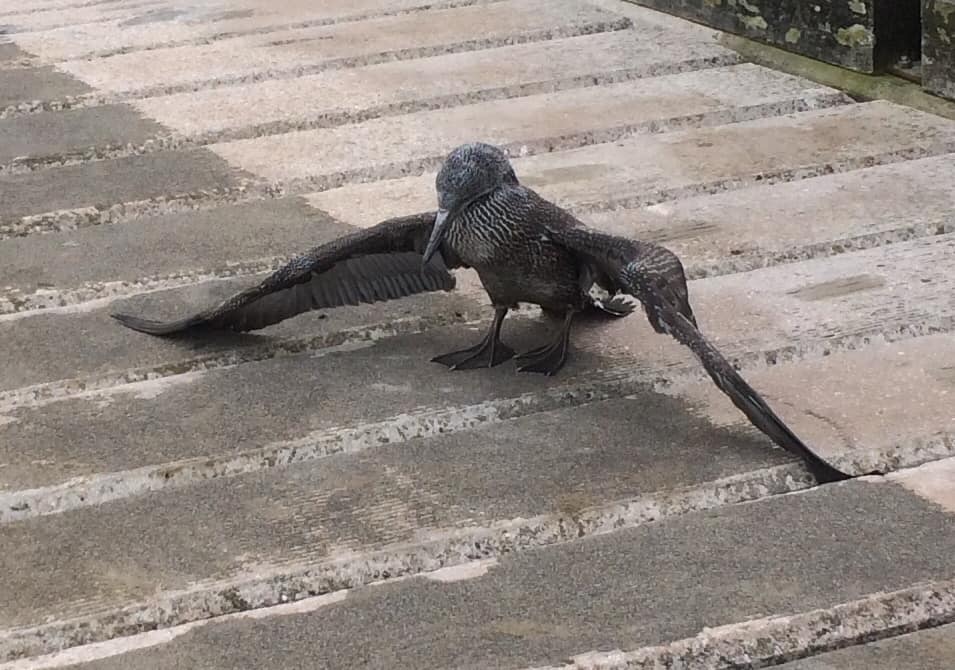
Shag
Phalacrocorax aristotelis
A large bird that can be seen fishing offshore. They under the surface of the water after their prey and reemerge often some way from where they went in.
It is easy to mistake the shag for the cormorant below. Close up, it can be see that the shag's face has a steeper profile than the cormorant.
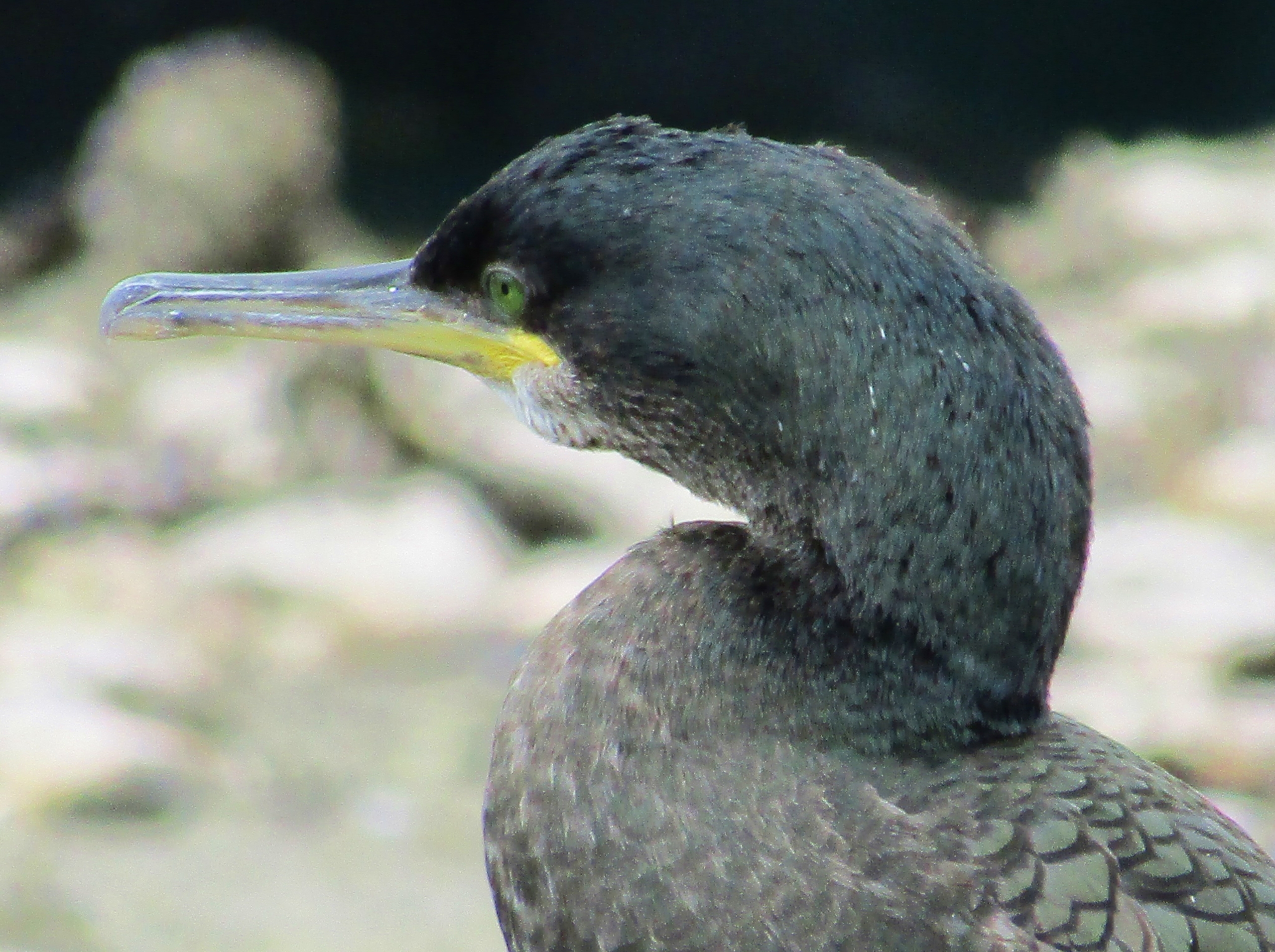
A shag pictured next to a Great Black-Backed Gull to show the size difference.

Cormorant
Phalacrocorax carbo
The cormorant can also be seen fishing by diving under the water. The cormorant is bigger than the shag (although that really only helps as an ID tip if the two are stood next to each other...). Cormorants have a flatter head.
Coromorants can often be seen standing drying their wings by holding them outstretched. It's quite a sight as its wingspan is about one and a half metres.

Below is a continental (sinensis) cormorant, distinguishable by the shape of its yellow cheek patch, in breding plumage - the white collar band. This is, apparently, irresistable to female cormorants. And below, in winter plumage.

Common Guillemot
Uria aalge
A little larger than the Razorbill but similar colouring. The thinner, more pointed, beak of the guillemot is a useful way of differentiating between the two.


Above - summer plumage; below - winter plumage.


In breeding plumage, the head is entirely dark -see below.
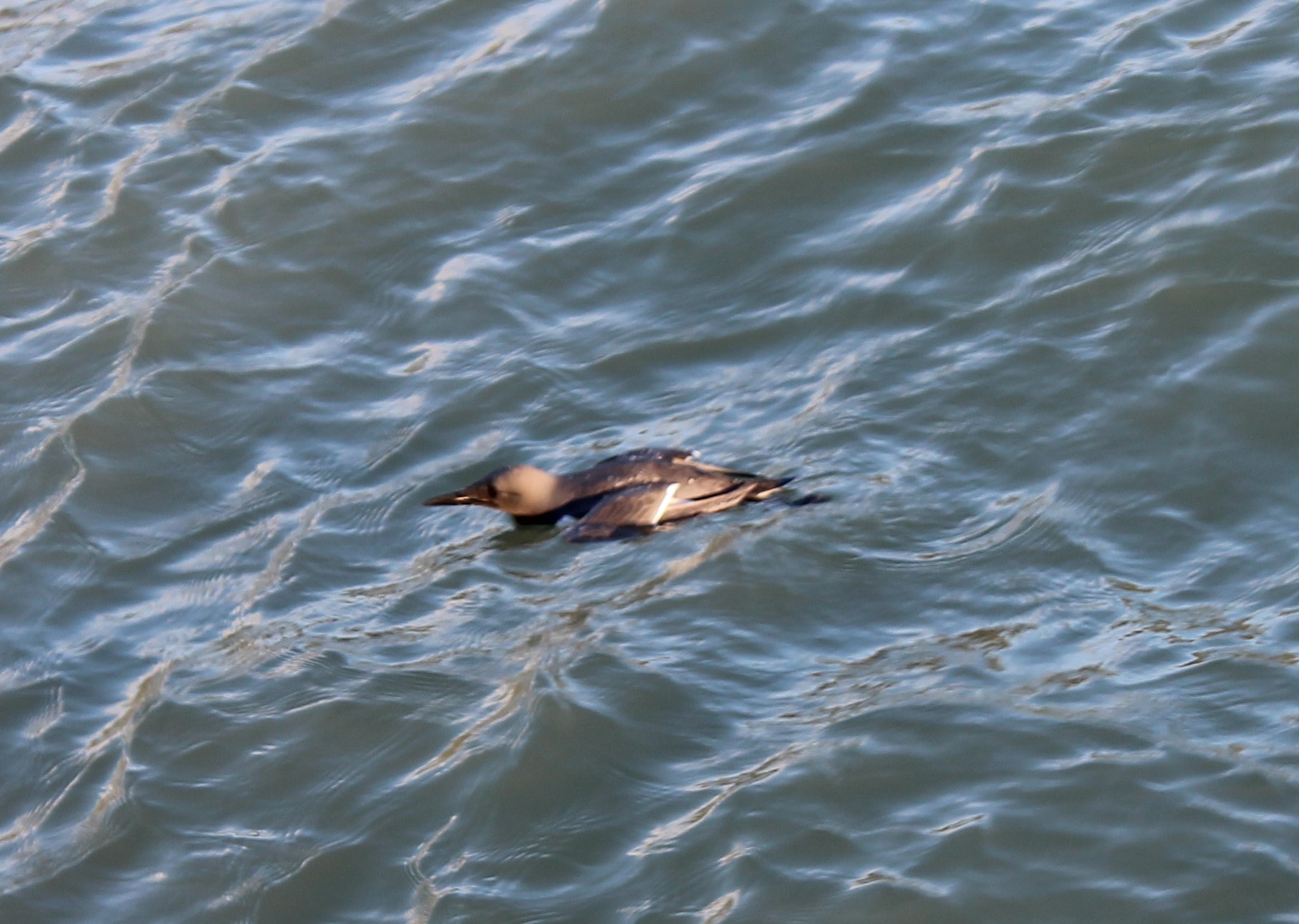
Below - a guillemot diving for food.

Great Crested Grebe
Podiceps cristatus
Usually seen on fresh water lakes but some winter on sheltered coasts. A medium sized bird, only a little smaller than a herring gull.

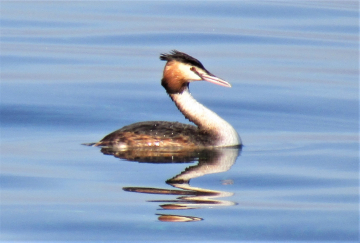
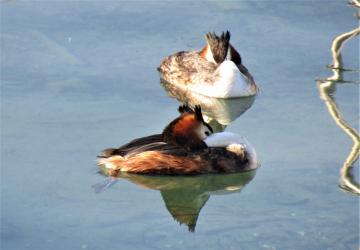
Turnstone
Arenaria sp.
Wading bird
These small birds hop about on rocky or sandy beaches looking food - insects, crustaceans or sea snails. They are related to sandpipers.
The ringed plover
Charadrius hiaticula
Wading bird
These are sweet little birds that I always enjoy seeing. Their activities are not unlike the turnstone above but they are also partial to marine worms which they pull out of the sand.
Oystercatcher
Haematopus ostralegus
Wading bird
I think if a child were going to imagine a seabird, they would probably create something that looked like an oystercatcher with their bright orange legs and over-sized beak. Oyster catchers are out on the hunt for cockles and mussels on rock pools and in the sand and chirp to each other loudly as they search.
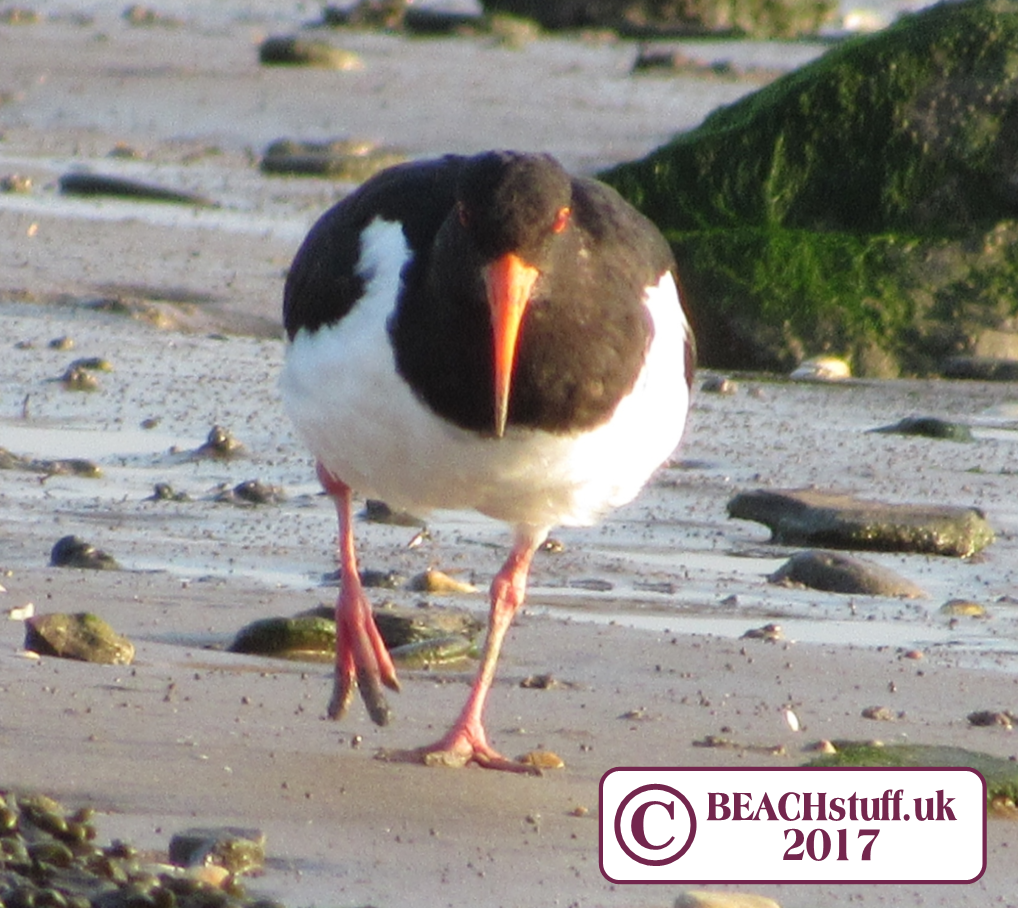
Listen to the clip below for a snippet of their lovely chattering:
Sanderling
Calidris alba
Wading bird
I could watch these little birds for hours. They hunt on sandy beaches - just on the water's edge - for marine worms and sea snails but they seem to avoid every incoming wave by running rapidly towards the beach. When the wave recedes, they follow it back down the beach it as fast as their little legs will carry them.
Redshank
Tringa totanus
Wading bird
This small bird can either be a UK resident or a continental visitor. It is easy to spot due to its orange legs and matching beak and loud peep call. Often seen hanging out at estuaries.

Lapwing
Vanellus vanellus
Wading bird
These birds (also known as peewits because of their whistle) seem to be seen just as often on pasture land as they do on the coast. While they look exotic, they are actually UK residents although visitors from northern Europe add to population numbers in the winter.
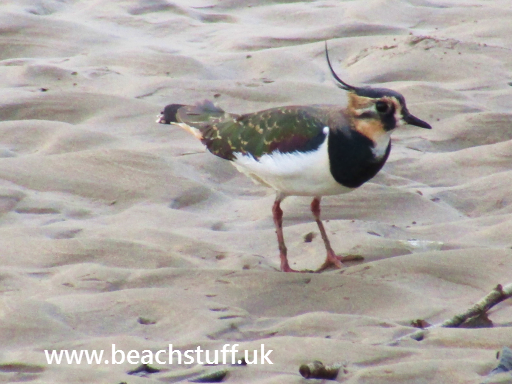
Whimbrel
Numenius phaeopus
Wading bird
While they are known to breed in the the north of Scotland, in the rest of the UK, they are only seen when they stop here to rest on their way to somewhere else (the warmth of South Africa). They hunt in the mud of estuaries and the sand of beaches for crabs, shrimps, sea snails, and marine worms.
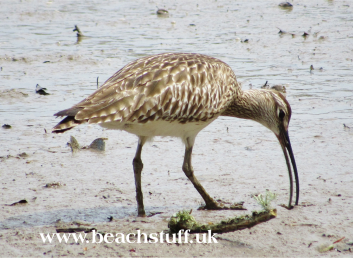
Curlew
Numenius arquata
Wading bird
On the face of it, the curlew looks very similar to the whimbrel (above). However, there are some significant differences. The curlew can be seen in the UK all year round as it breeds here, it is larger than the whimbrel and it lacks those dark stripes on the whimbrel's head. It does, however, share the same taste for sea snails, worms and shrimps.
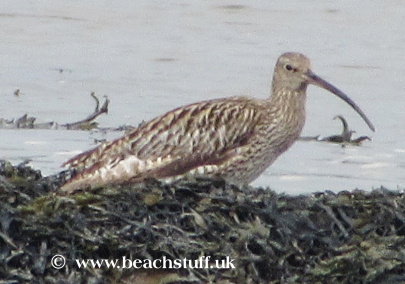
Dunlin
Calidris alpina
Wading bird
A small sandpiper, numbers of breeding pairs in the UK are massively outnumbered in the winter by visitors. They eat insects, snails and worms.
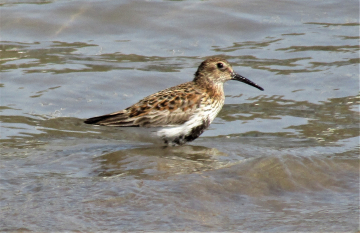
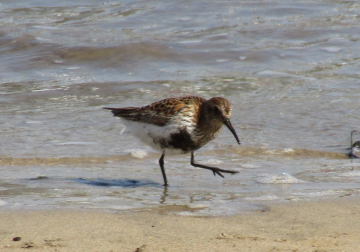
Purple Sandpiper
Calidris maritima
Wading bird
This is a winter visitor only (it generally doesn't breed here) in the UK where it likes our rocky beaches. Its favourite seaside treats are crabs and winkles.

Dalmatian Pelican
Pelecanus crispus
During 2016, a pelican was seen on the coast of Cornwall and North Devon. With a 5ft wingspan, it was an incredible sight - and an incredibly rare sight. I plotted the sightings of the pelican across Europe and in England - the resulting interactive map can be seen here.

Grey Heron
Ardea cinerea


This is a large bird - standing around a metre tall with a wingspan of around two metres. It can often be seen standing motionless by the side of a river, canal, estuary. In fact, they can stand so still, we often don't realise that we are there.
They can also be seen standing in trees where they also nest.
Little Egret
Egretta garzetta

Mallard Ducks
Anas platyrhynchos
We tend to think of ducks as being on freshwater lakes and inland streams and parks but they are actually just as at home in the sea. Although they do stay close enough to shore to have a good view of the land, they can sometimes be seen 'surfing' little waves. Below - herring gulls and mallards foraging on the strandline together.
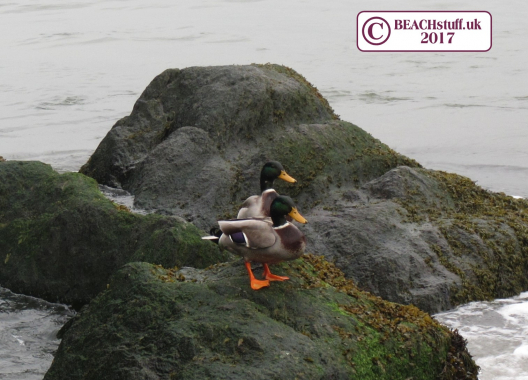
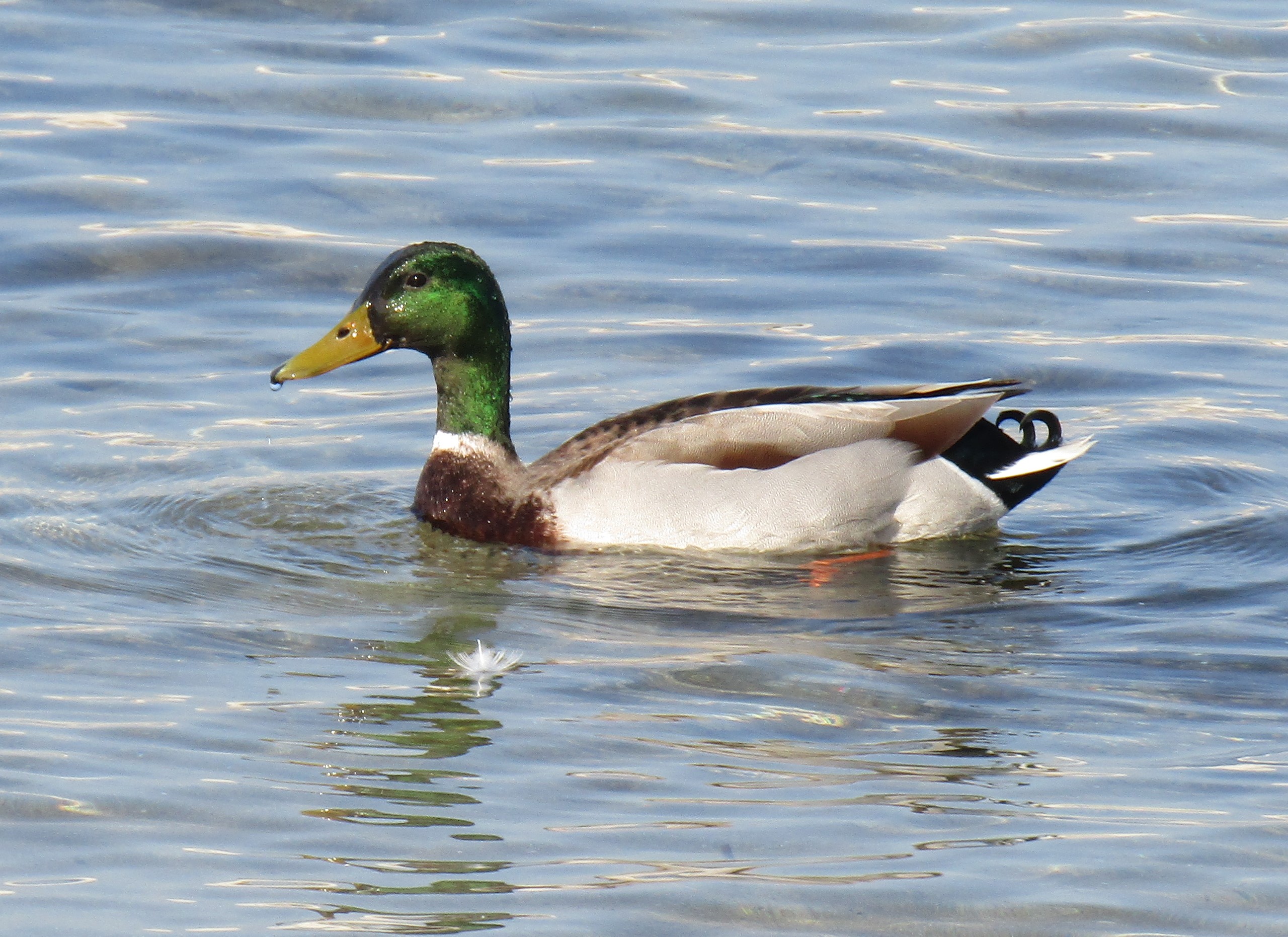
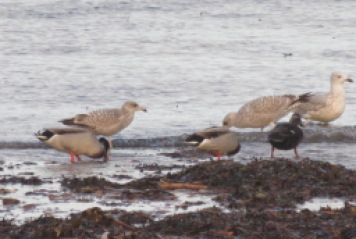
Ducks and herring gulls patrolling the beach together.
Below - a young duckling.

Tufted duck
Aythya fuligula
Smaller than a mallard. Healthy breeding population in the UK (not so much Wales) which is supplemented by winter visitors from colder climes.

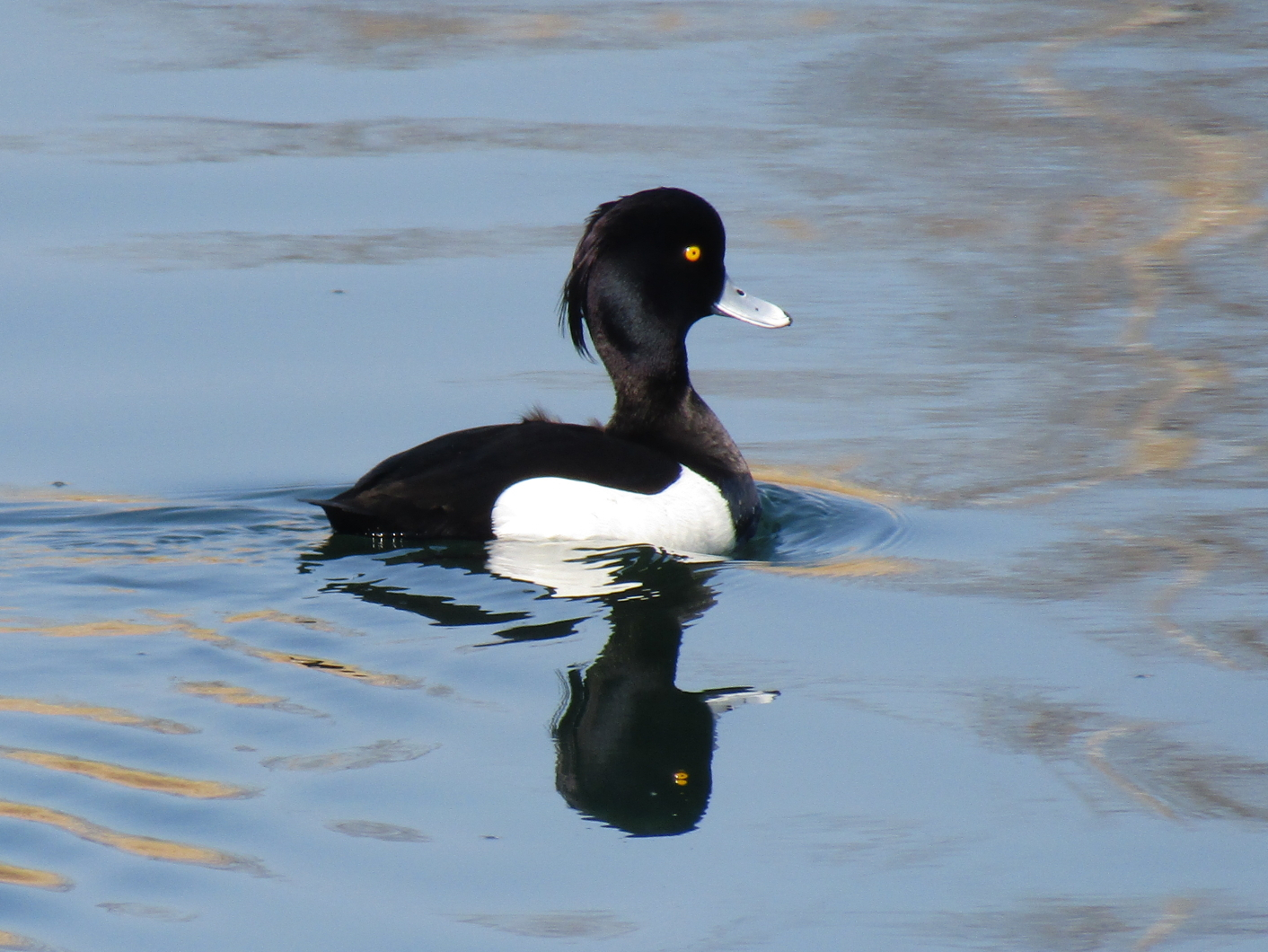
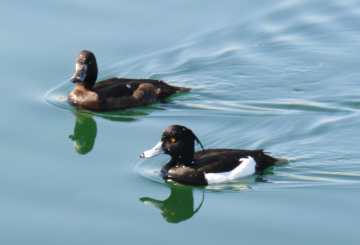
Above: the black and white male tufted duck is in the foreground with the brwn female in th background.
Red-crested Pochard
Netta Rufuna
A striking duck but not common in the UK.

Garganey
Anas querquedula
A smaller duck than the mallard that feeds on the surface of the water (generally marshy/reed lakes) rather than dives.
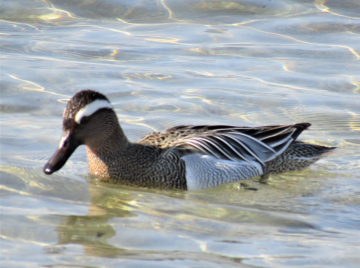
Canada Geese
Branta canadensis
An introduced species from North America, Canada Geese are now commonly seen all over the UK all year around. And can also be seen gathering and paddling on beaches.
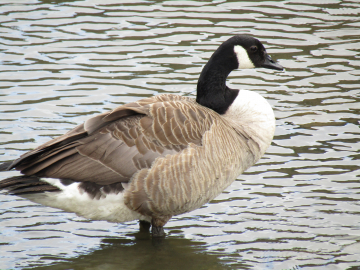

Mute Swan
Cygnus olor
Can be a surprising sight on the sea, but seems happy there for short visits. The swan below was a visitor to Torquay Harbour.
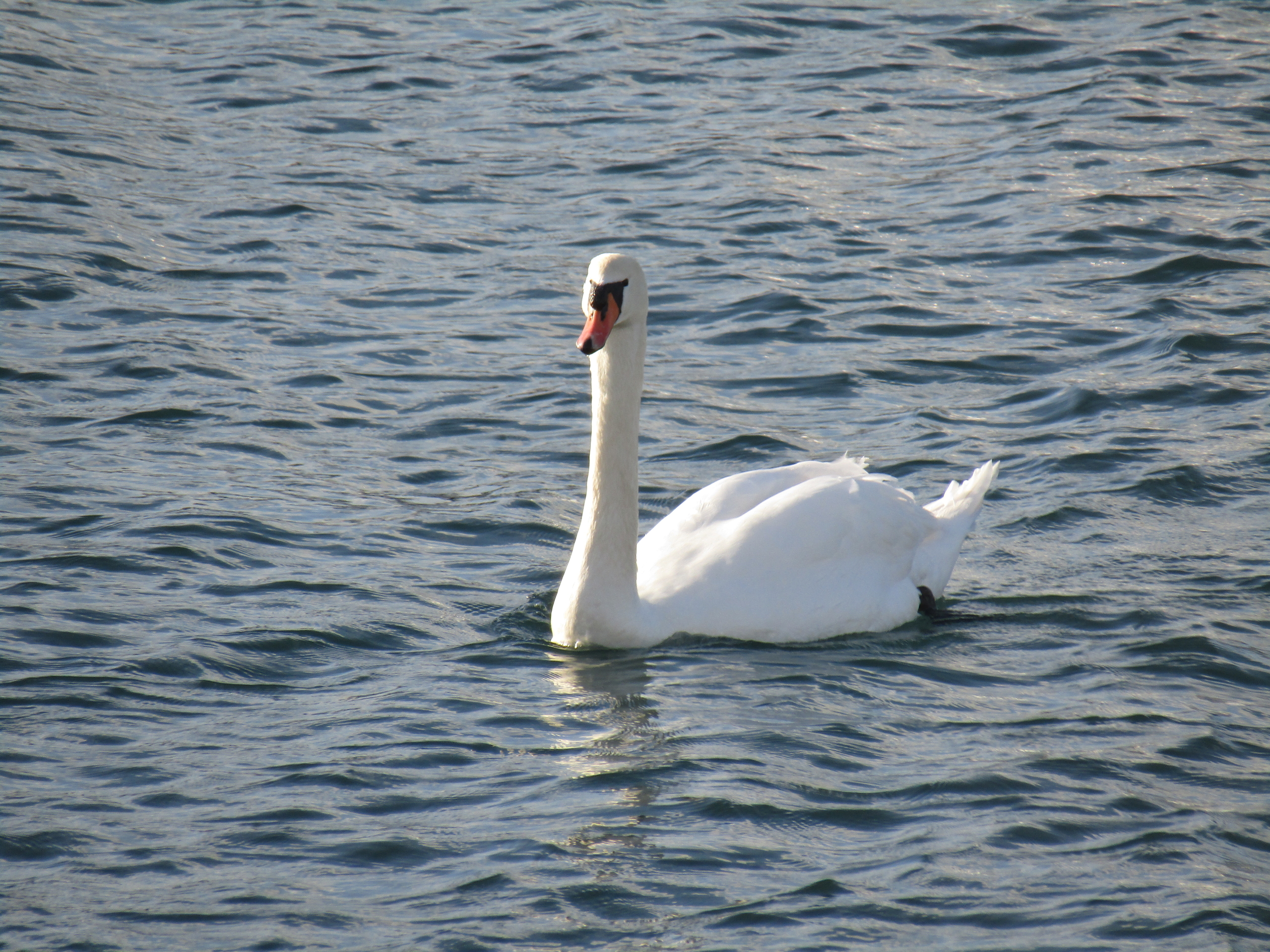
Goosander
Mergus Merganser
A large sawbill duck distinguishable by its slender red beak and bottle green head (or grey body and brown head in the case of the female).
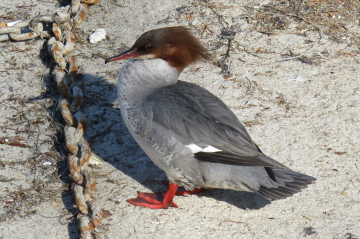
Female goosander above, male below.

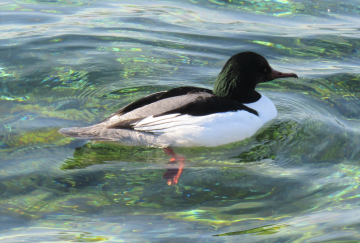
Moorhen
Gallinula chloropus
Inhabitants of rivers, streams, lakes and ponds.
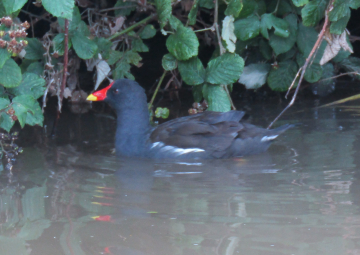
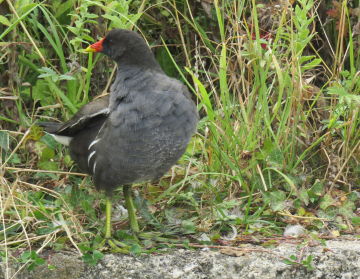
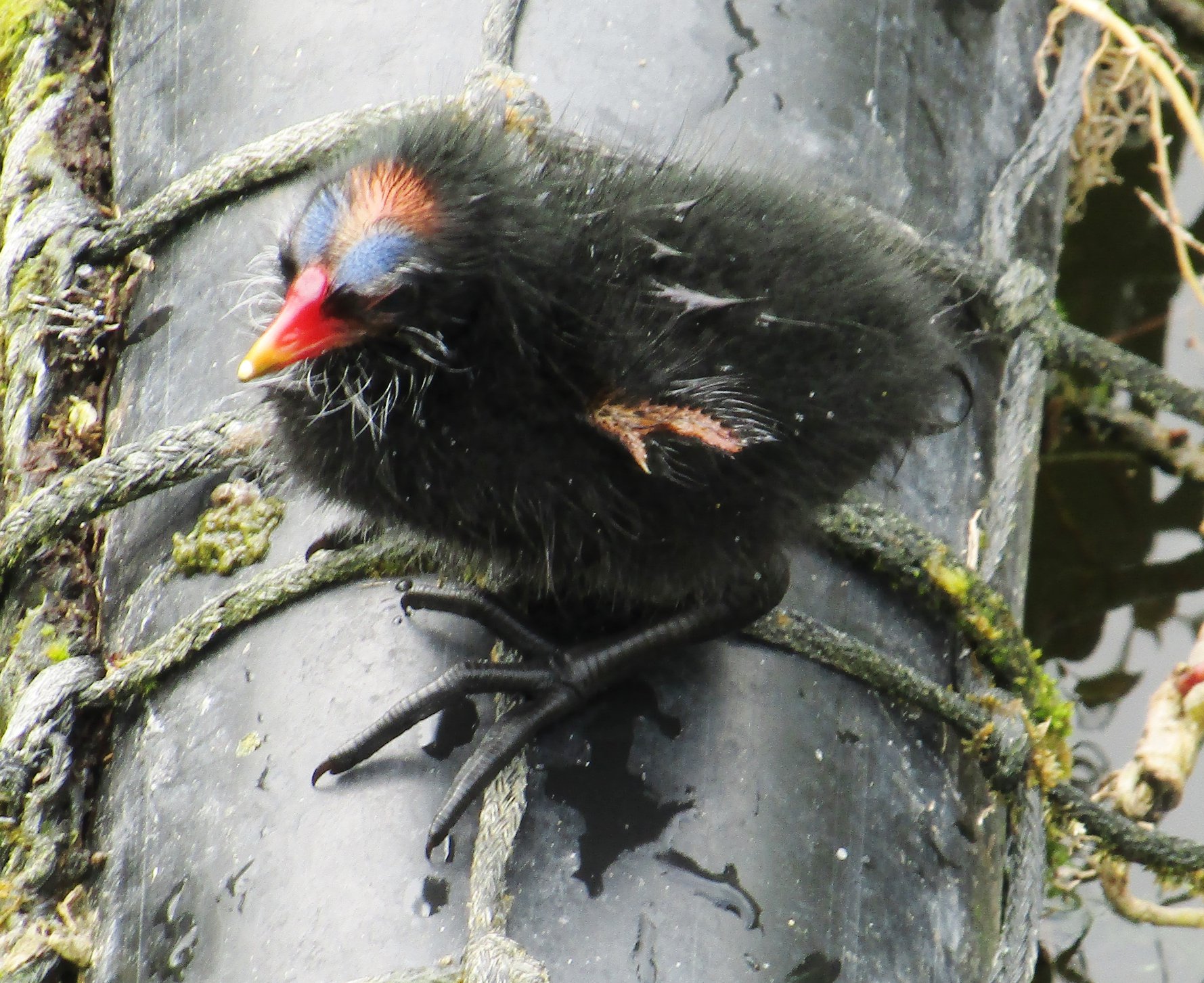
Coot
Fulica atra
Immediately distinguishable from the moorhen because of its white, rather than red, face mark and beak, the coot is actually slightly larger and dives for its food (see clip below) whereas the moorhen stays on the surface.

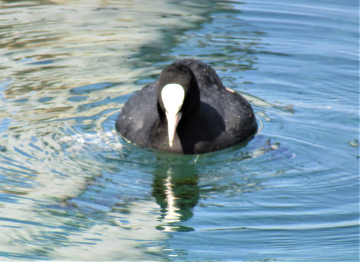
Non-marine birds that are known to take an interest in the strandline - so we are taking an interest in them.
Rock Pipit
Anthus petrosus
This gorgeous yellow and brown bird (a little chubby maybe) hangs around on coastal rocks and rocky shores where it hunts strandline insects, as well as small fish and small shellfish.
The short clip below shows a pipit on coastal rocks looking for insects.
Pied wagtail
Motacilla alba
These birds are rarely still. When they are not bobbing up and down (wagging their 'tails'), they are frantically running about. Their mission is to seek out insects. And there are a lot of insects on the strandline.
Grey wagtail
Motacilla cinerea
Like its pied cousins (above), grey wagtails are attracted to strandlines because of the many insects there.

Jackdaw
Corvus monedula
Jackdaws have a charming habit of strutting with their heads held at a fantastically pompous angle (have a look at the video below). They, along with other members of the crow family, search the strandline for insects and whatever else they can find that might be tasty. Jackdaws are related to crows (below right) but seem a bit more friendly and a little more camp.
Carrion Crow
Corvus corone
Carrion crows (or simply 'crows' as they are known) are much larger than jackdaws with a much more 'butch' presence. They are not particularly fussy about what they eat so the strandline is them a great place for them to scavenge insects, dead fish, worms, molluscs, scraps of human food and anything else they may find.
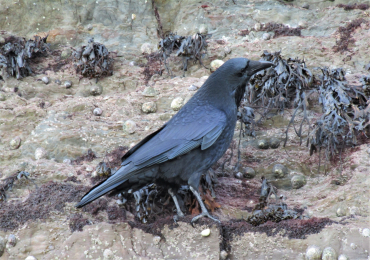
Kestrel
Falco tinnunculus
A kestrel keeps an eye on the beach from above...


























